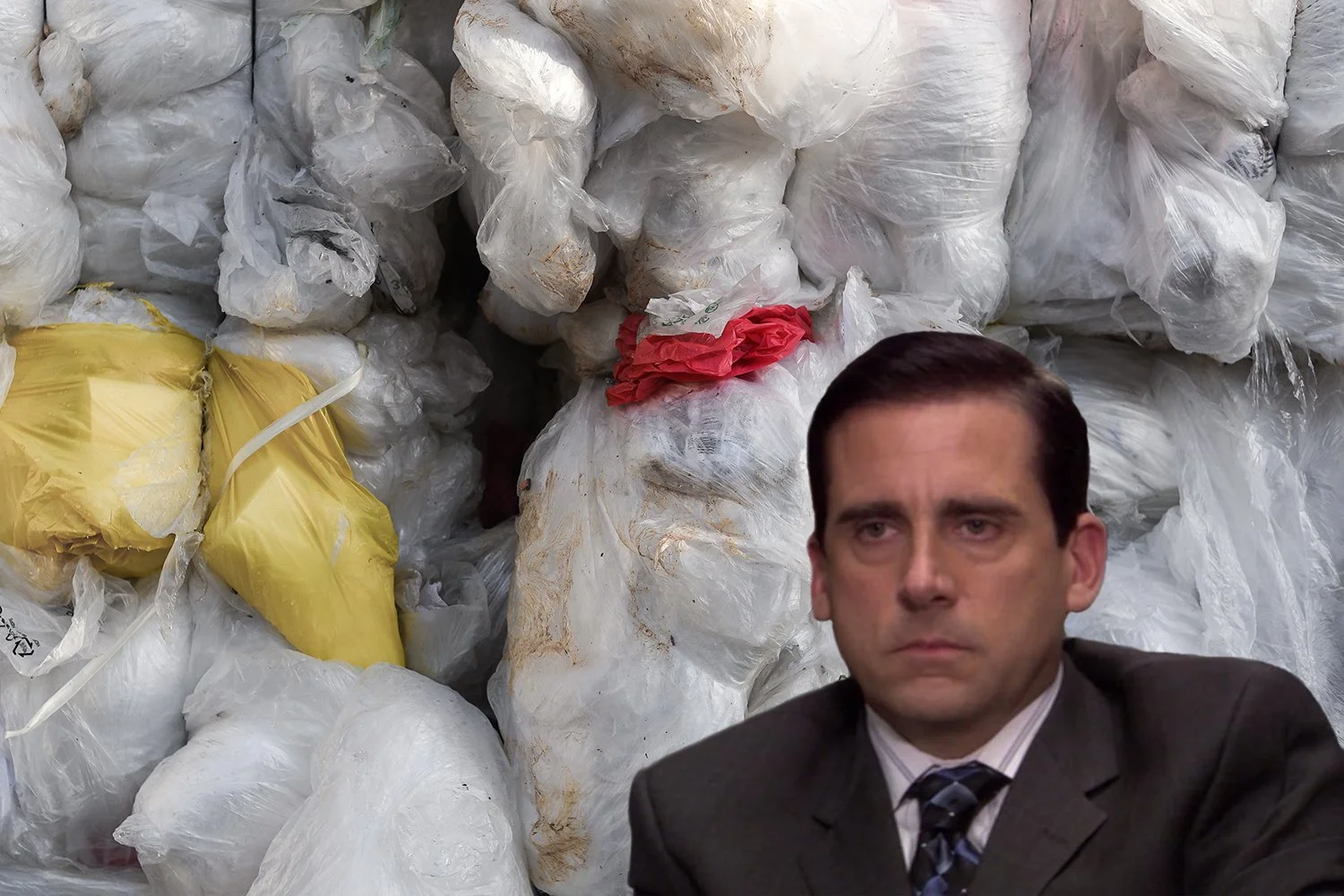How to reduce plastic in packaging — and why it matters more than ever
Steve Jobs once said, “Packaging can be theatre, it can create a story.” It’s communicative to consumers, and a narrative where plastic is simultaneously the protagonist and the villain isn’t the kind of tale that will make your brand legendary.
The entire narrative around packaging is changing. In recent years, sustainability has developed from a corporate buzzword to a focus of brands and consumers alike. Environmental protection is the foundation of modern product experience and a key measure of business integrity.
In this article, we’ll share:
The main drawbacks of plastic in packaging.
Why a change is urgent and strategic for your business.
How Woola offers sustainable and scalable packaging solutions.
Plastic packaging, a clear opportunity for positive change
Packaging in the 1930s was a hotbed of innovations. Beverage cans made of steel began to appear on store shelves alongside glass bottles, while paperboard boxes became the material of choice for the growing soap and cigarette markets. Meanwhile, little-known materials called polyethylene and polystyrene made their first appearance.
Cheap and lightweight, these revolutionary materials became the foundation of the modern packaging industry thanks to their versatile protection of shipped goods. In the century since their arrival, the true cost to the environment has become apparent.
Nearly 91% of plastic waste never gets recycled. Most of it ends up in landfills, incinerators, or natural ecosystems. At this rate, plastic production is expected to triple by 2060, with single-use plastics being the key driver. The shockwaves of this will be felt for centuries, given the equal amount of time it takes for plastics to break down.
“Oh, but we have biodegradable plastic, that will solve things for sure,” some might say. But unfortunately, bioplastics aren’t perfectly biodegradable. Most bioplastics only degrade in specific industrial composting conditions. This means that, unless properly disposed of, they remain persistent in an environment as much as regular plastic.
What the retail and ecommerce industries need is a significant change to lower their negative impact. An estimated 70% of consumers worldwide actively seek brands that utilise sustainable packaging. Not only this, they’re willing to pay a premium for it!
The takeaway from all this is that while plastic may be inexpensive in terms of short-term cost, in the long term, what will matter most to your customers is brand trust and environmental liability.
The true cost of cheap plastic packaging
It’s easy to frame plastic packaging as another source of pollution that can simply be ‘stopped,’ like chemical waste or agricultural runoff. But plastic packaging is directly tied to Big Oil, a long and destructive supply chain that stretches from the ocean, topsoil, animals, and our own bodies.
The negative impact of plastic packaging in a nutshell:
Climate impact: The production of plastic is as harmful as the material itself. Between the heavy reliance on fossil fuels and the greenhouse gas (GHG) emissions that come from every stage of fabrication, the climate impact starts even before the lifecycle of plastic itself begins.
Microplastics pollution: As plastics degrade, they fragment into microplastics that infiltrate water, soil, and food systems. These have been detected in everything from sea salt to human blood.
Toxic chemical exposure: Many plastics contain additives like phthalates and bisphenols. These are known to disrupt hormones and pose health risks, especially in packaging that comes into contact with food.
Ecological damage: It’s well-documented that animals often ingest plastic items, mistaking them for food. There are also many cases of poisoning or entanglement. The rise of plastic waste is reshaping entire ecosystems and impacting the food we eat.
New materials offer a sustainable path forward
In recent decades, we’ve seen the rise of companies (re)discovering sustainable packaging materials that offer viable alternatives to plastic. We at Woola are one of these new-age businesses looking to turn the packaging industry upside down, for a straightforward reason: it’s our best bet for preventing the worst climate doomsday scenarios from becoming a reality.
"We founded Woola to help stop the use of fossil fuels. We are replacing protective plastic packaging with sustainable alternatives made of wool that work just as well, but look much better."
— Anna-Liisa Palatu, CEO and Co-founder of Woola
Wool has been a mainstay of cultures across climates for centuries. Its exceptional insulation properties and adaptability have made this ancient material timeless and the ideal candidate for next-generation packaging materials to replace plastic. What else is there to like about it? Plenty! Take a look at the summary table below.
| Feature | Wool |
|---|---|
| Shock absorption | Wool wrap and wool cushioning pads: compostable, reusable, and resilient. |
| Insulation | Naturally temperature-regulating and breathable. |
| Moisture resistance | Wool resists moisture while remaining breathable, reducing spoilage risk. |
| Padded mailers | Paper mailers with wool cushioning are reusable and biodegradable. |
| End-of-life outcome | Home compostable, releasing nutrients back into the soil. |
| Consumer perception | Positive and premium. Associated with luxury, innovation, and sustainability. |
| Environmental impact | Locally sourced surplus wool, short supply chains, and low-energy processing. |
| Regulatory risk | Low-risk material with proven sustainability credentials. |
| Storage and handling efficiency | Compresses naturally, versatile and reusable. |
Our goal at Woola is to make sustainable wool packaging as accessible as possible. To do this, we’re creating packaging that looks good, without compromising on the protection. Our designs are proof of this: Wool Envelopes and Bubble Wool were just the start. Our packaging products are all thoughtfully engineered to benefit your business as much as the planet.
How we source our wool
We follow our unique Know Your Wool (KYW) approach when sourcing raw wool. Our products are made of waste wool that the farmers would otherwise have burned or buried.
We make sure to know exactly who supplies our wool. By using locally sourced wool from Estonian farmers that we personally vet, we can be sure that every phase of our supply chain is ethically sourced.
While waste wool is too coarse to be used as yarn in the textile industry, we give it a new life as a packaging material that looks and feels premium.
The exterior layer of our Wool Envelopes is made of sturdy FSC certified paper produced in our partners’ factories in Europe. The complementary layers of paper and wool are not glued together like traditional plastic-lined mailers, which makes them easy to separate and recycle.
The real-world gains of switching to wool packaging
So, why wool exactly? If you want your brand to stand out with a reputation for sustainability, you need to take a bold step. Here’s what our clients are getting from choosing Woola over plastic packaging:
Compliance and risk mitigation: The EU’s Packaging and Packaging Waste Regulation (PPWR) makes it clear that brands must move away from plastic and adopt circular or easily-recyclable packaging that’s right-sized. Woola packaging is fully PPWR compliant, which helps clients avoid current penalties and stay ahead of future mandates.
Stronger brand alignment: Every brand wants the kind of reputation that gives it a forward-thinking edge. One that makes them stand out from their competition. It’s not enough to say your brand is sustainable — your customers want to see it in action, and packaging is an excellent medium for doing just that.
Customer loyalty: Customers want to support brands that share their values. If sustainability is a core value of your brand but your products get delivered in plastic packaging, the values are misaligned and that can be a major drop-off point for customers.
Ready to switch to Woola packaging?
You can reduce the plastic in your packaging to zero with Woola. Switching to our high-quality solutions is the quickest way to reduce your brand’s environmental impact, enhance your customer experience, and stay ahead of regulatory shifts. Some of our happiest customers are in the following industries:
Like Jobs said, packaging tells a story. What will yours be? Talk to our sales team to learn more or request your free Woola sample today.




